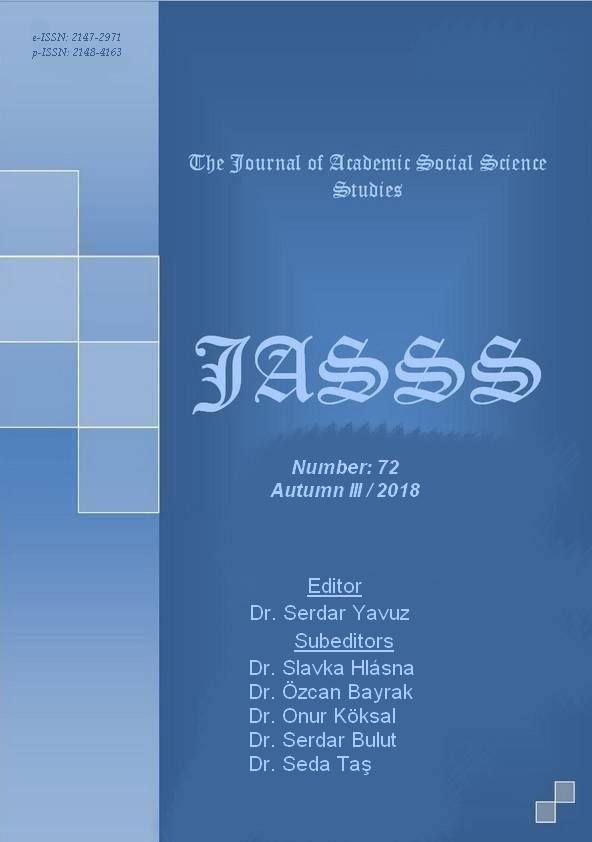Author :
Abstract
Görsel metin inceleme ve okuma düşüncesi, izleyici ile yapıt arasında tamamlayıcı bir unsur aynı zamanda da bir eleştiridir. Eleştiri kendini tartışmaya açmanın yanı sıra izleyiciyi ikna etmek ve çelişkiye davet etmektir. Sanat eleştirisi yapıtı biçim, içerik ve anlam yönünden ayrıntılı bir biçimde inceleme ve değerlendirme sürecinden oluşur. Bu çalışmada Hollanda’lı Soyut Ekspresyonist sanatçı Willem de Kooning’in (1904-1997) “Kadın I” (1950-1952) adlı yapıtı Edmund Burke Feldman’ın “Araştırıcı Sanat Eleştirisi” (Feldman, 1987) yöntemi kullanılarak çözümlenmeye çalışılmıştır. Yapıtın ilettiği mesajı anlamak ve anlamlandırmak için sanatçı ve yapıtı üzerinden bir takım sorular sorarak betimleme, çözümleme, yorum ve yargılama aşamalarından yararlanılır. Betimleme aşamasında yapıtta yer alan imgeler tanımlanmaya çalışılırken, çözümlemede plastik göstergeler tartışılmaya ve yorum basamağında ise figüratif unsurların derin anlamlar içeren devingen ve soyut ilişkiler ağındaki mesajlarına ulaşılmaya çalışılmıştır. Kooning’in yapıtı özelinde yorumlama yapılırken genel olarak sanatçının sanatsal kişiliğine ait bilgilere de yer verilmiştir. Yargı basamağında ise; eserin sanat tarihi açısından önemine değinilmiştir. Ayrıca bu araştırma, Kooning’in sanatını psikolojik bir süreç olarak ele almakla birlikte, sanatçının resimde temsil sorununu bilinçli bir deneyime nasıl dönüştürdüğü ile ilgili tespitlere de ulaşmayı amaçlamaktadır. “Kadın I” adlı yapıt kadın bedenine olan geleneksel düşünce yapısını altüst eder. Hatta şöyle ki travmatik geçmişinden getirdiği ruhsal deneyimleri yeni bir kadın temsili oluşturur. Böylece sanatçı sunduğu bu kadın bedeni ile hem kendi ruhunu doyuran bir model, hem de sanatın tarihinde büyük etkiler yaratacak bir idol yaratır.
Keywords
Abstract
The idea of reading and reading text is a complementary element between the viewer and the work. Criticism is to convince the viewer and to invite them to contradiction as well as to open themselves to debate. The work of art criticism consists of a detailed examination and evaluation process in terms of form, content and meaning. In this study, Edmund Burke Feldman's (Criticism of Investigating Art ist (Feldman, 1987) was used in the study. In order to understand and make sense of the message conveyed by the work, the artist and his work are asked to ask a number of questions, depicting, analyzing, interpreting and judging the stages. While trying to define the images in the artwork during the description phase, plastic indicators are tried to be discussed in the analysis and in the step of interpretation, the messages of figurative elements in dynamic and abstract relations network which contain deep meanings are tried to be reached. In the course of the interpretation of Kooning's work, information on the artistic personality of the artist was also included. In the judicial step; the importance of art in terms of art history is mentioned. In addition, this research deals with Kooning's art as a psychological process, but it also aims to reach the determinations about how the artist transformed the representation problem in painting into a conscious experience. His work ”Woman I” subverts the traditional thought structure of a woman's body. In fact, his spiritual experiences from his traumatic history constitute a new representation of women. Thus, with this female body, the artist creates a model that fills his soul and creates an idol that will have great effects in the history of art.





